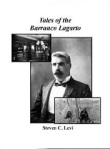The wild horses in The Wild Horses Of Hiroshima (240 pages) are certainly intriguing, as with the title and cover art, and play a strong role at the story’s end by appearing in the streets of Hiroshima to wander about as a healing force, cared for by the citizens. They derive from the imagination of a novelist who is also a character in the novel, who is also creating a narrative. The horses seem to emphasize purity and nobility, pounding through the city in herds, a shield against nuclear war and against the violent nature of the human species itself.
This novel inside the novel begins approximately half way into the story, following a background beginning with the atom bomb attack on Hiroshima and its hideous devastation. A young American man has been a penpal with a young Japanese girl, and after the war, he goes to Hiroshima to find her. They marry and move to New Hampshire, bearing a son, Yukio. Yukio becomes a strong, husky young man who survives the attack of a bear which kills his father. He and his mother, Miyeko, return to Japan where he becomes a sumo wrestler. Time passes and he retires to write novels. The novel within a novel begins, with occasional returns to the exterior story of Yukio and his mother, plus Yukio’s geisha, Satoko. Continue reading

 In Disgrace (Penguin Books, 220 pages), Professor David Lurie’s crisis begins with his foolishly taking advantage of one of his students, then proceeds to his inadequate response under enquiry. Gradually, the story’s emphasis on “disgrace” pervades the entire narrative. It extends to white dominance and native reprisal in South Africa, to cruelty with animals, and to self-obsession within the human community generally.
In Disgrace (Penguin Books, 220 pages), Professor David Lurie’s crisis begins with his foolishly taking advantage of one of his students, then proceeds to his inadequate response under enquiry. Gradually, the story’s emphasis on “disgrace” pervades the entire narrative. It extends to white dominance and native reprisal in South Africa, to cruelty with animals, and to self-obsession within the human community generally.




